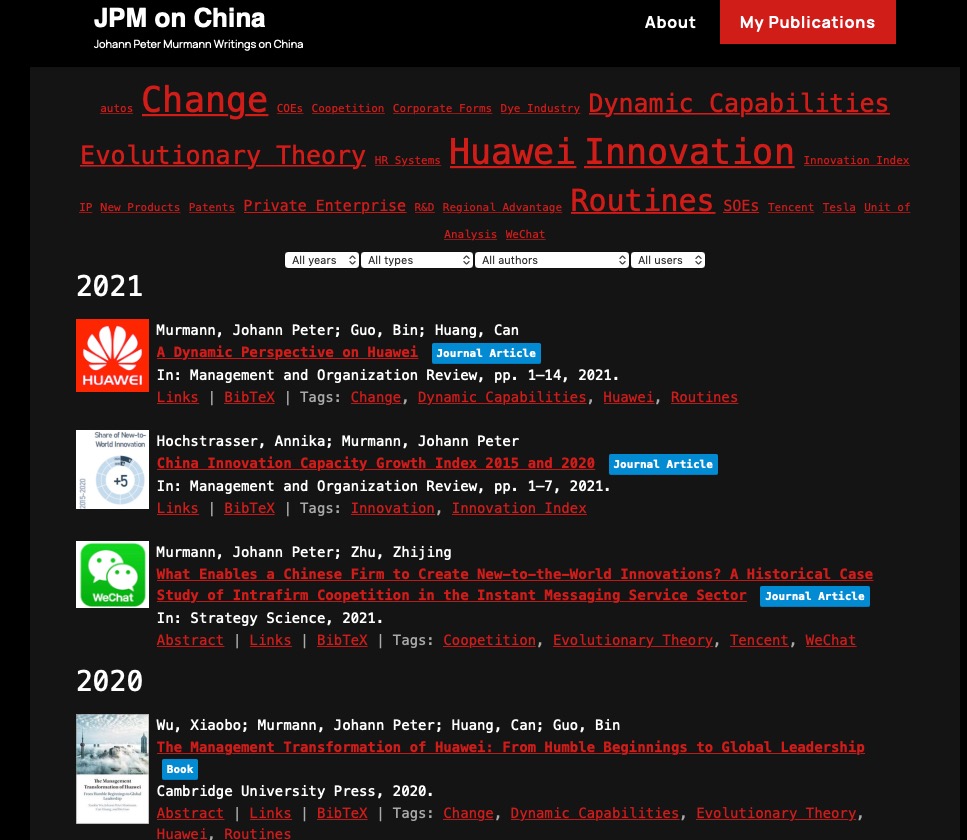
Research Focus on Auto Industry
My research team is interested in studying how to improve strategic forecasting ability. As a key empirical context, we have selected the auto industry undergoing dramatic technological changes.

Click on the picture to access auto-future.org
Categories: Innovation | Management |

New Competition in the auto industry: Incumbents versus startups
I have two new publications about the new competition in the auto industry.
A Capabilities Framework for Dynamic Competition: Assessing the Relative Chances of Incumbents, Start-Ups, and Diversifying Entrants (with Fabian Vogt in Management and Organization Review)
Exploring the structure of internal combustion engine and battery electric vehicles: implications for the architecture of the automotive industry (with Benedikt Schuler in Industrial and Corporate Change)
Categories: Innovation | Management | Writing |

Forum on ‘The Rise of China’s Digital Economy’
In this forum, we present three essays that collectively seek to document and explain the rise of China’s digital economy. The first essay written by Hong Jiang – who is based in China – and myself – who is based in the West – focuses on documenting the rise of China’s digital economy by comparing it systematically with developments in the United States (Jiang & Murmann, 2022). This first essay intentionally says relatively little about the causes driving the rise so that the two invited teams of commentators could focus on reasons behind the growth of e-commerce and internet services in China. The first team, composed of Chong Ma, Ji-Ye Mao, and Xiao-Peng An (2022), is based in China and the second team, composed of Martin Kenney and Arie Y. Lewin (2022), is based in the United States. Both teams were provided with the opening essay and a set of questions to stimulate a debate about causes.
• Is the increasing strength of these digital sectors intimately tied to government policies? If so, how?
• Is the fact that China is much more lax about privacy a critical reason for the advances in China?
• Will China overtake the US in these digital services or will the fast growth slowdown?
• On the assumption that the geopolitical struggles between China and the US continue to rise, what, if any implications will this have for the further development of e-commerce and digital services companies in China and the US?
• The Chinese government recently has made it more difficult for Chinese firms to list on US stock exchanges; will this have a negative impact?
Categories: China | Innovation | Economics |
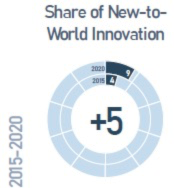
China Innovation Capacity Growth Index 2015 and 2020
It is of interest in China and across the world to predict whether China will catch up with the most economically advanced nations in innovation capacity. To facilitate an ongoing assessment of China’s innovation capacity, the article develops a China Innovation Capacity Growth Index composed of eight separate measures. China’s performance in 2020 is compared to the baseline from 2015, showing that China has progressed in six of the eight measures. This article and the accompanying Technicalm Appendix explain each of the measures, including the sources for the data, and report
the changes in performance over time.
Download article here: China Innovation Capacity Growth Index 2015 and 2020
Categories: China | Innovation | Management |

My Writings on Chinese Firms and Innovation in the Chinese Economy
I collected all my Writings on Chinese Firms and Innovation in the Chinese Economy in one place.
Categories: China | Innovation | Publications | Writing |
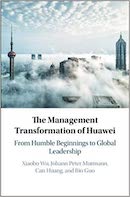
The Management Transformation of Huawei: From Humble Beginnings to Global Leadership
Huawei has become China’s most prominent multinational company and a leader in the ICT sector. Given unprecedented access to the company, the authors of this book examine the management transformation of Huawei from its inception in 1987 until 2019, observing in detail not only the creation of its organizational routines but also the breaking of routines across most major functional areas: Management, Product Development, HR, Supply Chain, Finance, R&D, Intellectual Property, and International Business. ‘Dynamic capabilities’ are central to theories of competitive advantage and this book highlights Huawei as an ideal case study for the successful implementation of change routines and change-supporting values. The chapters cover all the major change initiatives the firm has undertaken since 1996 to import best practices from the West, with the help of consultants. The insights presented in the book will be particularly interesting for academics in the field of strategy, management, and business history.
Table of Contents and ordering
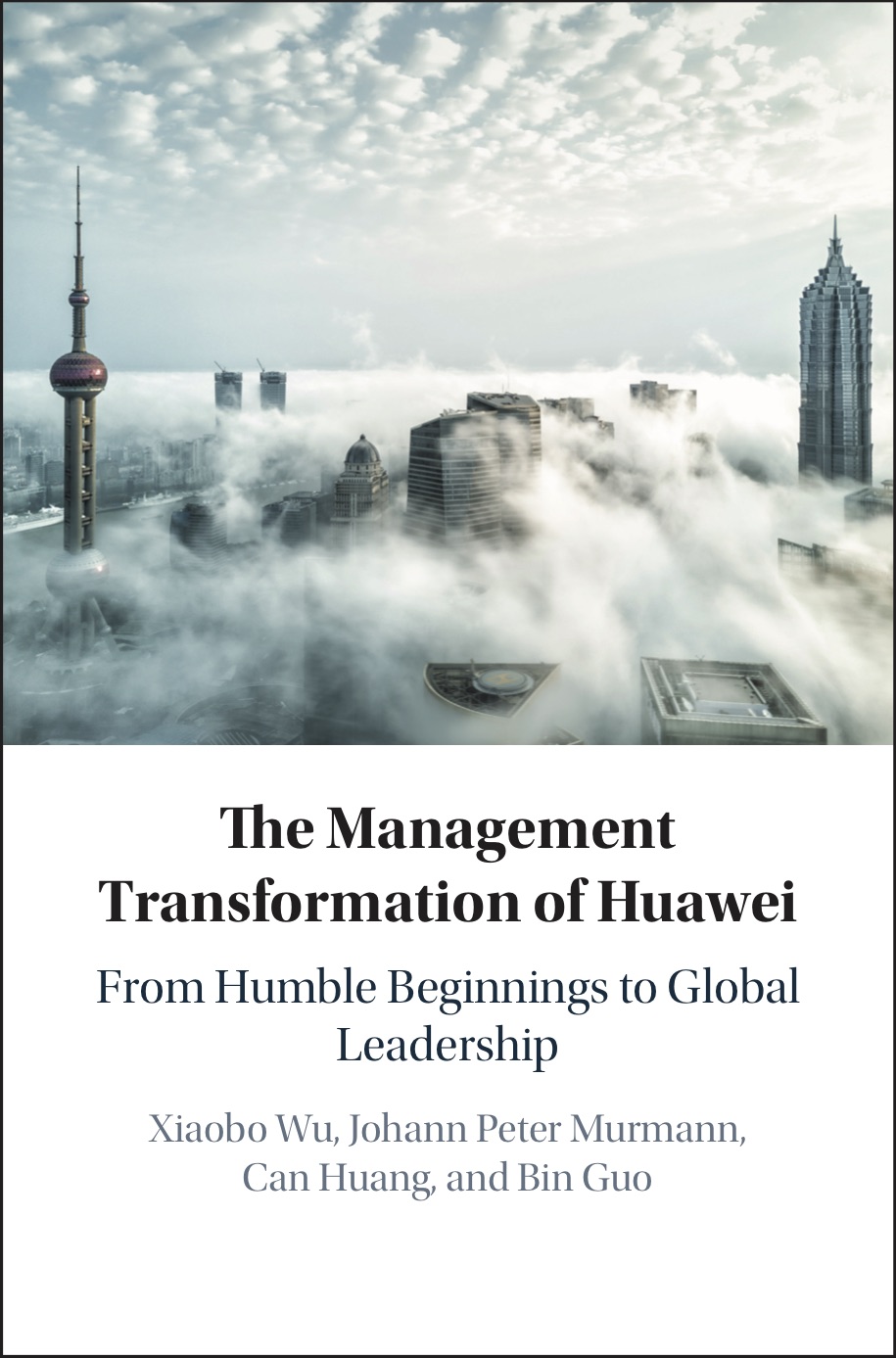
Endorsements
‘This is a ‘must read’ book for whoever is interested in the rise of China. It provides unique empirical and conceptual insights on China’s leading company and draws on world class researchers for analysis and commentaries. Uniquely valuable!’
—Yves Doz, Solvay Chaired Professor of Technological Innovation, INSEAD
‘The Management Transformation of Huawei provides a fascinating account of how Huawei preserved its entrepreneurial spirit as it rapidly scaled up over its 30-year history. Very few studies provide such an in-depth historical account of the evolution of a company over such a long period of time. Any scholar or practitioner interested in understanding the leadership challenges that arise with rapid organizational growth should read this book.’
—Ranjay Gulati, Paul R. Lawrence MBA Class of 1942 Professor of Business Administration, Harvard Business School
‘Huawei has become a major player in the global electronics industry and has been - perhaps unwantedly - cast into the role of a significant geopolitical force. This book is important and interesting because of the astonishing story of Huawei’s corporate growth. The authors provide an insightful account of how Huawei transformed itself from a small startup into a global giant, making an important scholarly contribution under major headings of the strategic management literature, such as ‘knowledge’, ‘routines’ and ‘dynamic capabilities’.’
—Sidney G. Winter, Deloitte and Touche Professor Emeritus of Management, Wharton School, University of Pennsylvania
Cambridge University Press Book page
Categories: Bookshelf | China | Innovation | Management | Publications | Writing |

Why gave hydrogen-powered car not become mainstream even though they were hyped in already in 1974
GM had a hydrogen-powered bus in 1967. VW and Mercedes had experimental hydrogen-powered cars in mid-1970s. Here is a list of vehicles produced by various companies. WSJ.com has produced a great video explaining why hydrogen cars are still not around the corner, despite the technology’s great promise.
Categories: Innovation | Management |

The Innovation and Entrepreneurship Ecosystem in India
India began the process of market liberalization that opened it to significant interactions with the world economy in 1991. In this essay, we provide an overarching view of the country’s journey toward integration with the global innovation and entrepreneurship network. Major nodes in this global network have two major components that may be metaphorically referred to as ‘pillars and ivy’. Globally connected multinational enterprises (MNEs) form the pillars. Agile startups are the ivy, and their success (metaphorically, the height to which they can climb) depends on their symbiotic connections with the pillar MNEs. Both components are essential and reinforce each other. Without MNEs, the scaling of startups is hampered. Without a vibrant population of startups, MNEs’ interest in a location remains driven by cost, rather than capability and creativity. MNEs (mainly foreign) provided the initial sparks for the formation of the Indian innovation and entrepreneurship ecosystem. We chart the subsequent growth of India’s startups. They began in the information technology (IT) sector but now cover a much wider range of industries. Today, India’s innovation and entrepreneurship ecosystem is one of the largest in the world, with global integration in terms of technology, financing, human capital, and administration.
This is the introductory essay to a Special Issue of Management and Organization Review on The Innovation and Entrepreneurship Ecosystem in India.

Categories: Entrepreneurship | Innovation |

Using Simulation Experiments to Test Historical Explanations
I wanted to test with a computer simulation the explanations I offered in my book Knowledge and Competitive Advantage: The Coevolution of Firms, Technology and National Institutions for why German firms overtook their French and British competitors in the Synthetic Dye Industry from 1857-1913. So I partnered with Thomas Brenner who has created a simulation model that can replicate the key stylistic facts we know about firm and industry growth patterns. Our paper is now published online the Journal of Evolutionary Economics.
Conducting Simulation Experiments to Test Historical Explanations: The Development of the German Dye Industry 1857-1913
Abstract: In a simulation experiment, building on the abductive simulation approach of Brenner and Werker (2007), we test historical explanations for why German firms came to surpass British and France firms and to dominate the global synthetic dye industry for three decades before World War 1 while the U.S. never achieved large market share despite large home demand. Murmann and Homburg (2001) and Murmann (2003) argued that German firms came to dominate the global industry because of (1) the high initial number of chemists in Germany at the start of the industry in 1857, (2) the high responsiveness of the German university system and (3) the late (1877) introduction of a patent regime in Germany as well as the more narrow construction of this regime compared to Britain, France and the U.S. We test the validity of these three potential explanations with the help of simulation experiments. The experiments show that the 2nd explanation—the high responsiveness of the German university system— is the most compelling one because unlike the other two it is true for virtually all plausible historical settings.
Categories: Innovation | Economics | Methodology | Publications |

“The Moon and the Ghetto” revisited by Richard Nelson
Richard Nelson explained why is worthwhile to revisit his book.
Over thirty years ago I wrote an extended essay, The Moon and the Ghetto, concerned with the troubling question of why societies so rich and capable technologically and organizationally as to be able to land a man on the moon seemed unable to deal effectively with e.g. poverty, illiteracy, slums. I argued that, while politics was part of the reason, in many cases the problem was that our scientific knowledge and technological know-how was not sufficient to point the way to a solution. The general problem of the great unevenness of human progress has not gone away. The questions explored in this seminar are, first, what lies behind the great unevenness of scientific and technological progress. And second, under what conditions does it make sense to seek a solution to a problem by trying to develop stronger know-how. Can progress be made by reorienting our innovation systems?
You can watch his lecture given at INGENIO in Spain on Youtube.
Categories: Lectures | Innovation |
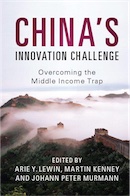
“China’s Innovation Challenge” published with Cambridge University Press
Arie Lewin, Martin Kenney and Johann Peter Murmann edited a new book on China’s Innovation Challenge: Overcoming the Middle-Income Trap.
New March 2016: Download Fronter Matter and Introductory Chapter
The book will also feature contributions from Justin Yifu Lin, Gordon Redding, Michael Witt, Keun Lee, Douglas Fuller, John Child, Simon Collison, Yves Doz, Keeley Wilson, Silvia Massini, Keren Caspin-Wagner, Eliza Chilimoniuk-Przezdziecka, Weidong Xia, Mary Ann Von Glinow, Yingxia Li, Zhi-Xue Zhang and Weiguo Zhong, Chi-Yue Chiu, Shyhnan Liou, and Letty Y-Y. Kwan, and Rosalie Tung.
Join discussion and get updates on the book by following its Facebook Page.

Categories: Bookshelf | China | Innovation |

The role of home country demand in the internationalization of new ventures
My article with Salih Ozdemir and Deepak Sardana was just published in Research Policy.
Abstract: International new ventures (INVs) have been documented to exist all around the world, but the literature is silent on the frequency of such companies in different countries. We contend that the propensity of new ventures to internationalize by forming international partnerships is higher in small-domestic demand countries because they have a greater motivation given their limited local demand. After discussing the methodological challenges in testing this hypothesis, we do such a test by studying alliances in the health segment of the biotech industry in relatively small-domestic demand countries (Australia, Israel, and Taiwan) and by comparing the results with five large-domestic demand countries (UK, Germany, France, US, and Japan). We find that young firms in the countries with smaller domestic demand are at least 3 times more likely to enter into international partnerships than their counterparts in countries with larger domestic demand. We further demonstrate that this difference can primarily be explained by the difference in the size of domestic healthcare markets rather than other underlying opportunity structure related factors.
Keywords: International new ventures; Internationalization; Small vs. large demand countries; Young biotechnology firms; International partnerships; Business development partnerships

Read and Download Full Article here
Categories: Entrepreneurship | Innovation | Publications |

Joel Mokyr Sees no End to Innovation
Mokyr points out the modern GDP measures are not accounting for improvements in quality of products and life.
He sees no end to innovation. Basic science needs to be funded by governments because private individuals and corporations cannot appropriate the returns from these investments. He sees culture that encourages natural skepticism of students as a key ingredient for furthering innovation of a country.
Categories: Innovation |

AOM 2013: Two workshops I am participating in: History and Design Evolution
History and Strategy: Toward an Integration of Theory and Method History and Strategy
New Presentation Slides for Download. Click here.
Program Session #: 80 | Submission: 14401 | Sponsor(s): (BPS, MH, TIM)
Scheduled: Friday, Aug 9 2013 11:45AM - 1:45PM at WDW Swan Resort in Swan 10
Organizer: Steven Kahl; Dartmouth College (TUCK);
Organizer: Brian S. Silverman; U. of Toronto;
Participant: David A. Kirsch; U. of Maryland;
Participant: Huseyin Leblebici; U. of Illinois;
Participant: J Peter Murmann; Australian School of Business, UNSW;
While historical research has played a central role in the development of the strategy literature, it remains underrepresented in strategy journals. This PDW explores how historical analysis can inform strategy research. As the strategy field continues to develop dynamic models of strategy, the historical perspective can provide unique perspective, and could potentially even develop a history-based theory of strategy. Yet, doing historical research in strategy faces methodological challenges given its different approach to the development of theory and use of evidence. Consequently, this PDW addresses the different opportunities available to strategy scholars to engage in the historical method. The format of the PDW is a combination of 1) presentations in which scholars experienced in conducting historical analysis within the strategy and organizational fields discuss the challenges of doing this work and 2) interactive breakout sessions in which participants break into smaller groups to discuss design of a historical study in topical strategy research areas, such as dynamic capabilities and industry evolution. These breakout sessions will help identify how the historical approach can make novel theoretical contributions and reveal roadmaps for pushing this work further.
Search Terms: History/Historical Analysis , Strategy , Theory and Methods
Architectural Strategy and Design Evolution in Business Ecosystems: Opportunities and Challenges
Ecosystem Design and Strategy
Program Session #: 279 | Submission: 10331 | Sponsor(s): (TIM, BPS, ENT, OMT)
Scheduled: Saturday, Aug 10 2013 10:15AM - 12:45PM at WDW Swan Resort in Swan 3
Categories: Innovation | Methodology |

Honoring the late Steve Klepper
Steve Klepper, who has been an inspiration to so many of us, recently passed away. At the 20th anniversary of the CCC colloquium, we honored Steve Klepper. The video captures very nicely how much Steve touched an entire generation of doctoral students working on the intersection of industry evolution and technological innovation.
Categories: Entrepreneurship | Innovation | Management |

Nelson, Richard R. (born 1930)
This short article is my entry on Richard R. Nelson in the Encyclopedia of Strategic Management
Richard R. Nelson (b. 1930) is an American economist who has had a significant influence on the field of strategic management. The fundamental question driving his work is how societies can be organized to improve their material well-being. In answering this question, Nelson identifies sustained technological innovation and a diverse range of often industry-specific institutional structures as the key engines of economic growth. He sees business firms as playing a key role in the growth process because firms are the carriers of the knowledge and abilities required to produce the complex product and services that characterize modern economies.
Keywords: evolutionary theory, firms, innovation, organizational capabilities, patents, Carnegie School, RAND Corporation; science policy, tacit knowledg
Categories: Innovation | Publications |

